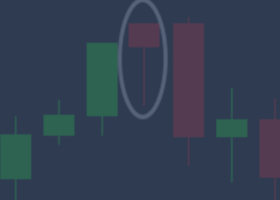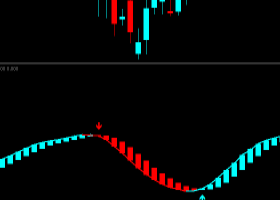Types of CFDs
This section will go over the different kinds of CFDs available to traders. The different types of CFDs offered by brokers will vary by region, as regulations differ. The differences in the types of CFDs generally stem from the type of financial asset that is the subject of the contract.
Share CFDs
These contracts are the most commonly traded CFDs in the marketplace. In these types of contracts, the CFD price comes from the price of the underlying stock that is the subject of the CFD. For someone with experience trading stocks, trading share CFDs will feel exactly the same. However, there are some differences to be aware of.
- No physical shares are exchanged
You do not own any shares of instead. Remember, instead of buying stocks, you are speculating that the price of a stock will increase or decrease. Your broker will send you a daily email with your account details.
- CFD commission prices are lower
Commissions you pay when trading share CFDs are lower than commissions you pay trading stocks. The lower cost of executing trades continues to contribute to CFDs’ popularity.
- CFDs are traded on margin
Margin is the minimum deposit you must keep in your trading account to trade.
- CFDs offer leverage
Leverage is an important concept to understand. Since CFDs are traded on margin, the trader is provided with leverage. The idea of leverage is that you can deposit a small amount and use it like a lever to trade a larger amount. While leverage may allow a trader to control more than the amount of his deposit, it can also amplify losses. CFDs require a small margin, meaning the leverage can grow quite high.
- Overnight financing charges
Overnight financing charges are set by the broker and is the cost of keeping your positions open overnight. Generally the overnight financing charges are tied to the LIBOR or another interest rate benchmark. These are charged each night you have open positions. These charges are usually very small and add to the overall cost of trading.
Commodity CFDs
Commodities are physical assets that are in demand. Investors classify commodities into two categories: hard commodities and soft. Simply put, hard commodities are mined and soft are grown. These assets are typically uniform in quality from one item to the next (this is known as a fungible good). For example, one soya bean is the probably the same as the next soya bean. Common commodities for CFDs include precious metals, corn, soya beans, wheat, gasoline, crude and heating oil. CFDs with commodities as the underlying asset give traders the opportunity to trade the futures market with the benefits of CFDs.
While trading commodities on an exchange is complicated due to varying lot sizes, different exchanges carrying different commodities, and expiry dates, the advantage of CFDs is they reduce the complexity of trading. Commodity CFDs can provide lower trading costs, and there is no confusion which exchanges to go to for specific commodities.
Index CFDs
As the name suggests, these types of CFDs are tied to the performance of a specific index. Traders prefer contracts based on index performance because of the high leverage possible, liquidity, and volatility these types of investments offer. Popular indices are the Dow Jones, NASDAQ, London Stock Exchange, Australian Stock Exchange, and Japan’s Nikkei. Those who trade indices believe that a specific market will rise as a whole. The advantages of index CFDs include the high trading volume, low margin, high leverage, low trading costs, and the access to international markets that would otherwise be difficult or costly.
Forex CFDs
Foreign Exchange, FX or forex for short, is the buying and selling of currencies. The forex market is traded 24 hours a day, 5 days a week with an extraordinarily large liquidity traded daily at over 4 trillion dollars exchanging hands every day. Forex offers high leverage, liquidity, and is the largest OTC exchange-free trading market. Forex CFDs are exciting and offer traders excellent opportunities. There is some terminology and basics to learn about forex itself first.
In forex, currencies are quotes as pairs. AUD/USD is the amount of American dollars required to buy Australian dollars. The first listed currency, AUD, is referred to as the base currency. Suppose AUD/USD is quoted as 0.9500. This means 95 American cents are needed to purchase 1 Australian dollar.
Currency movements are measured with pips. A pip is 4 decimal places to the right (the exception is USD/JPY, where 1 pip is two decimal places, or 0.01). For example, if a currency moves from 0.9500 to 0.9501, it has increased by 1 pip. Currency movements are small. Therefore, the forex industry offers traders very high leverage (limited by local regulations) to realize higher gains. At the same time, higher leverage may also mean higher losses.
Forex traders should be aware of the most commonly traded currency pairs, called the majors. These are the most liquid and popular currencies that are traded daily. Most of these pairs involve the US dollar. EUR/USD is the most traded currency pair worldwide. Other common pairs include GBP/USD, AUD/USD, NZD/USD, USD/CAD, and USD/CHF.
Treasury CFDs
When a trader wants to speculate on the value of treasury notes, he or she would choose a treasury CFD. Treasury notes that are commonly traded include US Treasury Notes of varying years, US Bonds, Euro-Bund, and Australian Treasury Bonds.


